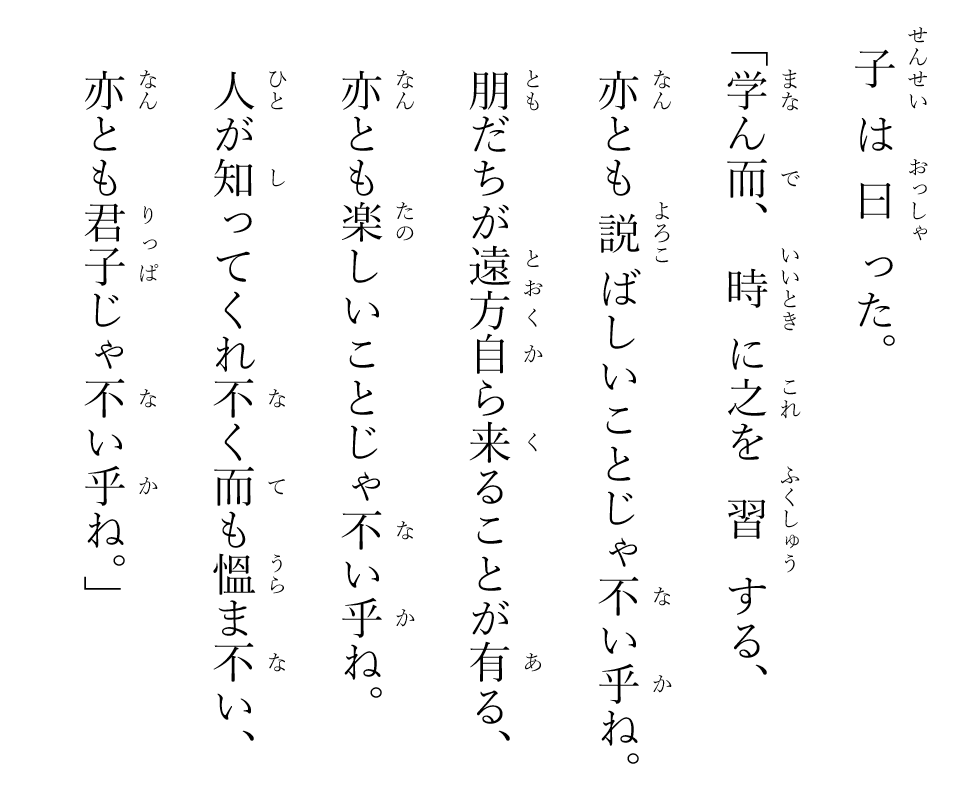Sylvester's womb of numbers (1850)
In 1851, Sylvester told us that his word for an oblong array of numbers was inspired by a biblical passage.
. . . I have in previous papers defined a matrix as a rectangular array of terms, out of which different systems of determinants may be engendered, as from the womb of a common parent; these cognate determinants being by no means isolated in their relations to one another, but subject to certain simple laws of mutual dependence and simultaneous deperition . . .
The word is originally a reference to the reproductive organ of oviparous animals. And it was first used by William Tyndale (b. 1494, d. 1536) in his English Bible (1526).
As yt is written in the lawe of the Lorde: every man chylde that fyrst openeth the matrix shalbe called holy to the lorde
Tyndale left the Greek word in Luke 2:23 untranslated, since the word μήτραν (mētran) in the Greek text is simply anglicized to matrix.

The word was actually employed by Sylvester one year earlier (1850, p. 24) when he wrote:
. . . this homaloidal law has not been stated in the above commentary in its form of greatest generality. For this purpose we must commence, not with a square, but with an oblong arrangement of terms consisting, suppose, of \(m\) lines and \(n\) columns. This will not in itself represent a determinant, but is, as it were, a matrix out from which we may form various systems of determinants by fixing upon a number \(p\), and selecting at will \(p\) lines and \(p\) columns, the squares corresponding to which may be termed determinants of the \(p\)-th order . . .
Here we have a numerical recipe of how a rectangular womb of numbers can be partitioned to produce multiple square wombs, or subwombs. Sylvester chose the word matrix, following Tyndale's usage, precisely because it evokes this idea: from this numerical womb, determinants are born. Each determinant originates from the same underlying structure, emphasizing their shared origin, mutual dependence, and simultaneous deperition.
Example 1.
Consider the following rectangular womb:
$$ \mathbf{W}= \begin{pmatrix} 1 & 0 & 2 & 3 & 4\\ 0 & 1 & 4 & 5 & 6\\ 1 & 1 & 0 & 7 & 8\\ \end{pmatrix} $$\(\mathbf{W} = \begin{pmatrix} \mathbf{a}_1 & \mathbf{a}_2 & \mathbf{a}_3 & \mathbf{a}_4 & \mathbf{a}_5\end{pmatrix}\) can be partitioned to \(\frac{5!}{3!2!}\) or 10 different \(3 \times 3\) square wombs and the values of the cognate determinants associated with these numerical offsprings are:
$$ \begin{align} \begin{vmatrix} \mathbf{a}_1 & \mathbf{a}_2 & \mathbf{a}_3 \end{vmatrix} &= -6\\ \begin{vmatrix} \mathbf{a}_1 & \mathbf{a}_2 & \mathbf{a}_4 \end{vmatrix} &= -1\\ \begin{vmatrix} \mathbf{a}_1 & \mathbf{a}_2 & \mathbf{a}_5 \end{vmatrix} &= -2\\ \begin{vmatrix} \mathbf{a}_1 & \mathbf{a}_3 & \mathbf{a}_4 \end{vmatrix} &= +26\\ \begin{vmatrix} \mathbf{a}_1 & \mathbf{a}_3 & \mathbf{a}_5 \end{vmatrix} &= +28\\ \begin{vmatrix} \mathbf{a}_1 & \mathbf{a}_4 & \mathbf{a}_5 \end{vmatrix} &= -4\\ \begin{vmatrix} \mathbf{a}_2 & \mathbf{a}_3 & \mathbf{a}_4 \end{vmatrix} &= -16\\ \begin{vmatrix} \mathbf{a}_2 & \mathbf{a}_3 & \mathbf{a}_5 \end{vmatrix} &= -20\\ \begin{vmatrix} \mathbf{a}_2 & \mathbf{a}_4 & \mathbf{a}_5 \end{vmatrix} &= +2\\ \begin{vmatrix} \mathbf{a}_3 & \mathbf{a}_4 & \mathbf{a}_5 \end{vmatrix} &= +12 \end{align} $$Example 2.
Prove that $$ \begin{vmatrix} x & a & a & a\\ b & y & b & b \\ c & c & z & c \\ d & d & d & t \end{vmatrix} = \frac{(x-a)(y-b)(z-c)(t-d)}{\frac{1}{ 1 + \frac{a}{x-a} + \frac{b}{y-b} + \frac{c}{z-c} + \frac{d}{t-d} }} $$We can rewrite the given matrix as the sum of a diagonal matrix \(\mathbf{D}\) and a rank-one perturbation \(\mathbf{P}\)
$$\mathbf{W} = \mathbf{D} + \mathbf{P} = \begin{pmatrix} x-a & 0 & 0 & 0\\ 0 & y-b & 0 & 0 \\ 0 & 0 & z-c & 0 \\ 0 & 0 & 0 & t - d \end{pmatrix} + \begin{pmatrix} a & a & a & a\\ b & b & b & b \\ c & c & c & c \\ d & d & d & d \end{pmatrix} $$It is clear that we have
$$ |\mathbf{D}| = \begin{vmatrix} x-a & 0 & 0 & 0\\ 0 & y-b & 0 & 0 \\ 0 & 0 & z-c & 0 \\ 0 & 0 & 0 & t - d \end{vmatrix} = (x-a)(y-b)(z-c)(t-d)$$ and $$ |\mathbf{D}^{-1}| = \begin{vmatrix} \frac{1}{x-a} & 0 & 0 & 0\\ 0 & \frac{1}{y-b} & 0 & 0 \\ 0 & 0 & \frac{1}{z-c} & 0 \\ 0 & 0 & 0 & \frac{1}{t-d} \end{vmatrix} = \frac{1}{(x-a)(y-b)(z-c)(t-d)}$$The required result is a direct consequence of matrix determinant lemma,
$$|\mathbf{u} \mathbf{v}^{\top} + \mathbf{D}| = |\mathbf{P} + \mathbf{D}| = (1 + \mathbf{v}^{\top} \mathbf{D}^{-1} \mathbf{u})|\mathbf{D}|$$where \(\mathbf{P}\) can be written as a dyadic product \(\mathbf{u} \mathbf{v}^{\top}\), \(\mathbf{v}^\top = \begin{pmatrix}1 & 1 & 1 & 1 \end{pmatrix}\) and \(\mathbf{u} = \begin{pmatrix}a & b & c & d\end{pmatrix}^\top\)
The required result can also be attained with a slightly more tedious algebraic manipulations.
\(\Delta = \begin{vmatrix} x & a & a & a\\ b & y & b & b \\ c & c & z & c \\ d & d & d & t \end{vmatrix} = \begin{vmatrix} x & a & a & 0\\ b & y & b & 0 \\ c & c & z & -(z-c) \\ d & d & d & t-d \end{vmatrix}\) Then \(\Delta = (z-c) \begin{vmatrix} x & a & a \\ b & y & b \\ d & d & d \end{vmatrix}+ (t-d)\begin{vmatrix} x & a & a \\ b & y & b \\ c & c & z \\ \end{vmatrix}\) \(\phantom{\Delta} = (z-c) \begin{vmatrix} x-a & a & a \\ b-y & y & b \\ 0 & d & d \end{vmatrix}+ (t-d)\begin{vmatrix} x & a & -(x-a) \\ b & y & 0 \\ c & c & z-c \\ \end{vmatrix}\) \(\phantom{\Delta} = (z-c) \begin{vmatrix} x-a & 0 & a \\ b-y & y-b & b \\ 0 & 0 & d \end{vmatrix}+ (t-d)\begin{vmatrix} x & a & -(x-a) \\ b & y & 0 \\ c & c & z-c \\ \end{vmatrix}\) \(\phantom{\Delta} = (x-a)(y-b)(z-c)d + (t-d)\begin{vmatrix} x-a & a & -(x-a) \\ b-y & y & 0 \\ 0 & c & z-c \\ \end{vmatrix}\) \(\phantom{\Delta} = (x-a)(y-b)(z-c)d + (t-d)(x-a)y(z-c) \) \(\quad \quad + (t-d)(y-b)[a(z-c)+c(x-a)] \) \(\phantom{\Delta} = (x-a)(y-b)(z-c)(t-d) \) \( \quad \quad + b(x-a)(z-c)(t-d) + d(x-a)(y-b)(z-c) \) \( \quad \quad + a(t-d)(y-b)(z-c) + c(x-a)(y-b)(t-d) \) \(\phantom{\Delta} = (x-a)(y-b)(z-c)(t-d) \left(1 + \frac{b}{x-b} + \frac{d}{t-d} + \frac{a}{x-a} + \frac{c}{z-c}\right) \)Example 3.
Gaussian elimination in the Nine Chapters on the Mathematical Art.
今有上禾三秉,中禾二秉,下禾一秉,實三十九斗; 上禾二秉,中禾三秉,下禾一秉,實三十四斗; 上禾一秉,中禾二秉,下禾三秉,實二十六斗。 問上、中、下禾實一秉各幾何?
答曰:上禾一秉,九斗四分之一斗;中禾一秉,四斗四分之一斗;下禾一秉,二斗四分之三斗。
方程術曰,置上禾三秉,中禾二秉,下禾一秉,實三十九斗,於右方。中、左禾列如右方。以右行上禾遍乘中行而以直除。又乘其次,亦以直除。然以中行中禾不盡者遍乘左行而以直除。
左方下禾不盡者,上為法,下為實。實即下禾之實。求中禾,以法乘中行下實,而除下禾之實。餘如中禾秉數而一,即中禾之實。求上禾亦以法乘右行下實,而除下禾、中禾之實。餘如上禾秉數而一,即上禾之實。實皆如法,各得一斗。
$$\xrightarrow[39斗,於右方。中、左禾列如右方]{置上禾3秉,中禾2秉,下禾1秉,實}\left( \begin{array}{ccc|c} {\scriptsize 左} & {\scriptsize 中} & {\scriptsize 右} &\\ 1 & 2 & 3 & {\scriptsize 上禾}\\ 2 & 3 & 2 & {\scriptsize 中禾}\\ 3 & 1 & 1 & {\scriptsize 下禾}\\ \hline 26{\scriptsize 斗} & 34{\scriptsize 斗} & 39{\scriptsize 斗} \end{array} \right)$$ $$\xrightarrow[中 \leftarrow 右上禾\times 中行=3中]{以右行上禾遍乘中行而以直除} \left( \begin{array}{ccc} 1 & 2\times3 & 3 \\ 2 & 3\times3 & 2 \\ 3 & 1\times3 & 1 \\ \hline 26 & 34\times3 & 39 \end{array} \right) \xrightarrow[中\leftarrow 中 - 2右]{} \left( \begin{array}{ccc} 1 & & 3 \\ 2 & 5 & 2 \\ 3 & 1 & 1 \\ \hline 26 & 24 & 39 \end{array} \right) $$ $$\xrightarrow[左\leftarrow3左-右]{又乘其次,亦以直除} \left( \begin{array}{ccc} 1\times3 & & 3 \\ 2\times3 & 5 & 2 \\ 3\times3 & 1 & 1 \\ \hline 26\times3 & 24 & 39 \end{array} \right) \xrightarrow[]{} \left( \begin{array}{ccc} & & 3 \\ 4 & 5 & 2 \\ 8 & 1 & 1 \\ \hline 39 & 24 & 39 \end{array} \right) $$ $$\xrightarrow[左\leftarrow5左-4中]{然以中行中禾不盡者遍乘左行而以直除} \left( \begin{array}{ccc} & & 3 \\ 4\times5 & 5 & 2 \\ 8\times5 & 1 & 1 \\ \hline 39\times5 & 24 & 39 \end{array} \right) \xrightarrow[]{} \left( \begin{array}{ccc} & & 3 \\ & 5 & 2 \\ 36 & 1 & 1 \\ \hline 99 & 24 & 39 \end{array} \right) $$The last matrix is essentially the rotated echelon form of the original matrix. The solution for 下禾 is therefore \(\frac{99}{36} = 2\frac{3}{4}\), as prescribed by 左方下禾不盡者,上(36)為法,下(99)為實。實即下禾之實. To get 中禾, we use 法(36) to multiply with 中行下實 (24), and subtract 下禾之實 (99) from it.
$$\xrightarrow[餘如中禾秉數而一,即中禾之實]{以法乘中行下實,而除下禾之實} \left( \begin{array}{ccc} & & 3 \\ & 5 & 2 \\ 36 & & 1 \\ \hline 99 & 24\times36-99 & 39 \end{array} \right) \xrightarrow[]{} \left( \begin{array}{ccc} & & 3 \\ & \color{gainsboro}{36} & 2 \\ 36 & & 1 \\ \hline 99 & \frac{24\times36 - 99}{5} & 39 \end{array} \right) $$ $$\xrightarrow[餘如上禾秉數而一,即上禾之實]{以法乘右行下實,而除下禾、中禾之實} \left( \begin{array}{ccc} & & 3 \\ & \color{gainsboro}{36} & 2\times 153 \\ 36 & & \\ \hline 99 & 153 & 39\times36 \end{array} \right) \xrightarrow[]{} \left( \begin{array}{ccc} & & \color{gainsboro}{36} \\ & \color{gainsboro}{36} & \\ 36 & & \\ \hline 99 & 153 & \frac{39\times 36 - 2\times 153 - 99}{3} \end{array} \right) $$ $$ \xrightarrow[]{} \left( \begin{array}{ccc} & & \color{gainsboro}{36} \\ & \color{gainsboro}{36} & \\ 36 & & \\ \hline 99 & 153 & 333 \end{array} \right) \xrightarrow[]{} \left( \begin{array}{ccc} & & \color{gainsboro}{1} \\ & \color{gainsboro}{1} & \\ \color{gainsboro}{1} & & \\ \hline \frac{99}{36} & \frac{153}{36} & \frac{333}{36} \end{array} \right) \xrightarrow[]{} \left( \begin{array}{ccc} & & \color{gainsboro}{1} \\ & \color{gainsboro}{1} & \\ \color{gainsboro}{1} & & \\ \hline \frac{11}{4} & \frac{17}{4} & \frac{37}{4} \end{array} \right) $$ $$\xrightarrow[]{} \left( \begin{array}{ccc} & & \color{gainsboro}{1} \\ & \color{gainsboro}{1} & \\ \color{gainsboro}{1} & & \\ \hline {\scriptsize 二斗、四分斗之三} & {\scriptsize 四斗、四分斗之一} & {\scriptsize 九斗、四分斗之一} \end{array} \right) $$- See J. J. Sylvester (1850) Additions to the articles: On a new class of theorem, and on Pascal’s theorem, Philosophical Magazine 37, pp. 363 - 370. See also W. Spottiswoode (1851) Elementary theorems relating to determinants, Longman, London, and J. Sylvester (1851) On the relation between minor determinants of linearly equivalent quadratic functions, Philosophical Magazine 1(4), pp. 295 - 305, and A. Cayley (1858) A memoir on the theory of matrices, Philosophical Transactions of the Royal Society of London 148, pp. 17 - 37.
- The original Greek text is: καθὼς γέγραπται ἐν νόμῳ Κυρίου ὅτι Πᾶν ἄρσεν διανοῖγον μήτραν ἅγιον τῷ Κυρίῳ κληθήσεται.

As it is written in the law of the Lord: Every man-child that first open the matrix shall be called holy to the Lord.
In the Latin text (sicut scriptum est in lege Domini quia omne masculinum adaperiens vulvam sanctum Domino vocabitur), however, the word μήτραν (mētran) was not reused by the Latin translators. Instead, the word vulvam was used. Since vulvam is a physical reference to the lips and folds around the birth orifice, the Latin authors were emphasizing on the external opening of the muscular, pear-shaped organ.
Note that the Chinese translated the word mētran to uterus (胎) instead of vulva: 如主律所載、凡初胎之男、必稱聖歸主也. The Japanese, however, decided to handle the situation with a generic reference to onna-kara (女から from the woman) in which neither internal matrix nor external matrix is explicitly called out: モーセの律法には、「女から最初に生まれる子が男であれば、その子を主に捧げなければならない」とあったのです.
- The formula for calculating the determinant of an \(n \times n\) square matrix must be such that the determinant evaluates to zero whenever the matrix has rank 1. For example, in the simplest \(2 \times 2\) matrix
$$\begin{pmatrix} a & na \\b & nb \end{pmatrix}$$
The value of the determinant is \((-1)^{k_1} a\,\square + (-1)^{k_2} b\,\blacksquare \), the white square can only be filled with \(nb\) and the black square can only be filled with \(na\). Thus the sum is \((-1)^{k_1} anb + (-1)^{k_2} bna \). For the value to sum to zero, we must let \(k_2 = k_1 + 1\). Similarly, for
$$\begin{pmatrix} a & na & ma \\b & nb & mb \\ c & nc & mc \end{pmatrix}$$ we have \((-1)^{k_1} a\,\square + (-1)^{k_2} b\,\blacksquare + (-1)^{k_3} c\, \boxplus \) with
$$\square = \begin{vmatrix} nb & mb \\ nc & mc \end{vmatrix}$$
$$\blacksquare = \begin{vmatrix} na & ma \\ nc & mc \end{vmatrix}$$
$$\boxplus = \begin{vmatrix} na & ma \\ nb & mb \end{vmatrix}$$
- The word span was introduced by Garrett Birkhoff (b. 1911, d. 1996) and Saunders Mac Lane (b. 1909, d. 2005) in 1941. In a revised edition of their A Survey of Modern Algebra (1953, p. 164, p. 166), we have: . . . the set of all linear combinations of any set of vectors in a space \(V\) is a subspace of \(V\). This subspace is evidently the smallest subspace containing all the given vectors; hence it is called the subspace generated or spanned by them. The subspace spanned by a single vector \(\alpha_1 \neq 0\) is the set \(S_1\) of all scalar multiples of \(c \alpha_1\); geometrically, this is simply the line through the origin and \(\alpha_1\). Similarly, the subspace spanned by two non-collinear vector \(\alpha_1\) and \(\alpha_2\) turns out to be the plane passing through the origin, \(\alpha_1\), and \(\alpha_2\) . . . the important geometric notion of the dimension of a vector space or subspace remains to be defined abstractly. It will be described as the minimum number of vectors spanning the space (or subspace). Thus, ordinary space \(V_3(R^\#)\) can be spanned by the three vectors \((1, 0, 0), (0, 1, 0)\), and \((0,0,1)\) of unit length lying along the three coordinate axes, but by no set of two vectors (a set of two non-collinear vectors spans a plane through the origin) . . .
- See R. I. Porter (1970) Further Mathematics, G. Bell and Sons, Ltd, London, p. 366 (Problem 4).

We use the matrix determinant lemma as the powertool to work on the problem, as it is more elegant than repeated algebraic manipulations which rely on the fact the value of the determinant is unchanged if you arbitrarily add a linear combinations to any given column using the members in the column space of the given matrix. The matrix determinant lemma can be demonstrated easily if we start with following identity $$\mathbf{L} \mathbf{A} \mathbf{L}^{-1} = \mathbf{B}$$ where \(\mathbf{A} = \begin{pmatrix}\mathbf{I}+\mathbf{uv}^\top & \mathbf{u} \\ \mathbf{0} & 1\end{pmatrix}\), \(\mathbf{B} = \begin{pmatrix}\mathbf{I} & \mathbf{u} \\ \mathbf{0} & 1+\mathbf{v^\top uv} \end{pmatrix}\), and \(\mathbf{L} = \begin{pmatrix}\mathbf{I} & 0 \\ \mathbf{v^\top} & 1\end{pmatrix} \)





Comments